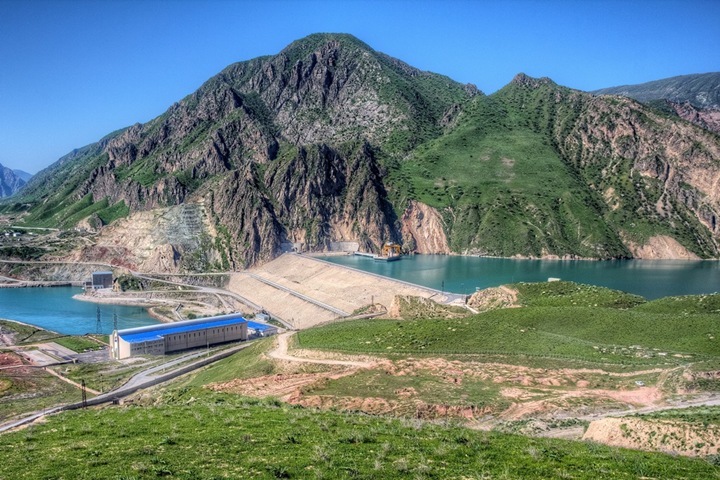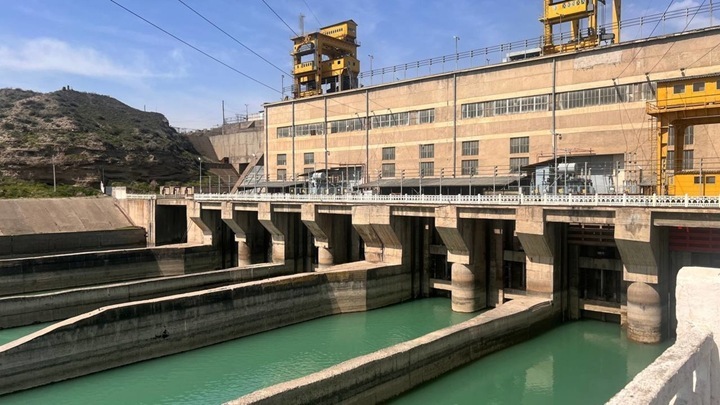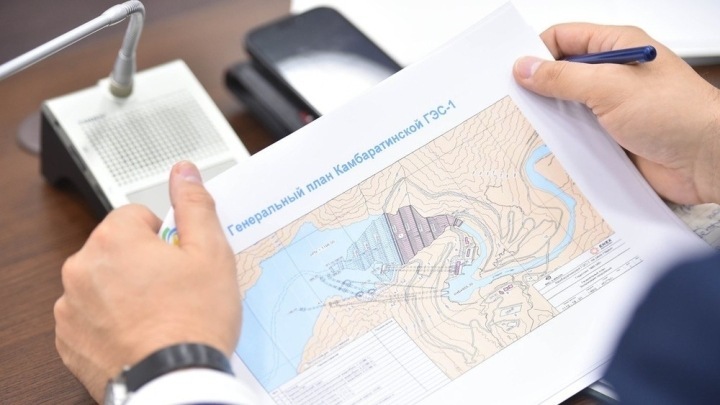Sangtudinskaya HPP-1: without export, but with idle discharges
Exactly 17 years ago, on January 20, 2008, Sangtudinskaya Dam-1 gave the first industrial current. On this day, the first hydroelectric unit of this station with a capacity of 167 megawatts (MW) was commissioned – almost two months earlier than planned. Since then, the station has generated about 34.7 billion kilowatt-hours of electricity.

The ceremonial commissioning of the hydroelectric power station as part of all four hydroelectric units with the participation of the President of Tajikistan Emomali Rahmon and the then head of Russia Dmitry Medvedev took place a year and a half later – on July 31, 2009.
All four hydroelectric units of the Sangtudinskaya Dam-1 with a capacity of 167.5 MW were manufactured and delivered to the Power Machines plant, a leading Russian manufacturer of power equipment.
JSC Sangtudinskaya Dam-1 is a joint Tajik-Russian enterprise in which Russia’s share is 75% minus 1 share, and Tajikistan’s share is 25% plus 1 share.
The reservoir of the Sangtudinskaya Dam-1 was filled to the design mark of the normal retaining level (571.5 meters) in early November 2010.
The station is currently second in installed capacity (670 MW) in Tajikistan only to the Nurek Dam (3,000 MW). This station is the fifth stage of the Vakhsh Dam cascade. That is, only the Baypazinskaya and Nurek stations are located upstream of Sangtuda-1 along the Vakhsh River, if you skip the unfinished Rogun Dam.
The station is located in the Dangara district of the Khatlon region, 110 km south of Dushanbe.
It provides 10% of the total electricity generation in the republic.
Unauthorized charity
The only buyer of Sangtuda-1 electricity is Barki Tojik, which has been supplied with about 34.7 billion kWh of electricity since the launch of the first unit of the hydroelectric power plant.
At the same time, the station cannot operate at full capacity due to the inability of Barki Tojik to sell the energy produced.
The energy holding annually receives up to 2 billion kWh of electricity from this station, although in accordance with the purchase and sale agreement, the annual volume of electricity supply should be 2.7 million kWh.
The company’s management has repeatedly complained that Barki Tojik will not be allowed to use its rights to sell electricity under direct contracts and to export it independently.
These rights are enshrined in the agreements between the Governments of the Republic of Tatarstan and the Russian Federation on the procedure and conditions for the participation of the Russian Federation in the construction of the Sangtudinskaya Dam-1 and on cooperation in the operation of this station.
In addition, Barki Tojik is chronically unable to cope with timely and full payment of the station’s electricity, even in these volumes. The average level of payment from JSC “Barki Tojik” as a whole for all years since the launch is 59%.
The debt of Barki Tojik to the Sangtudinskaya Dam-1 as of December 31, 2024 amounted to 3 billion 26 million somoni (about $298 million).
Explanations of “Barki tojik”
Barki Tojik responded to these claims with the absence of foreign electricity markets and its financial insolvency.
“The current state of affairs regarding the utilization of available capacities and payment for the actual volumes of electricity supplies of the Sangtuda Dam-1 in the summer periods is caused by the forced isolated mode of operation of the power system of the Republic of Tatarstan from the Unified Power System of Central Asia and the impossibility of exporting electricity to external regional markets. These circumstances and the current difficult financial condition of Barki Tojik did not allow us to ensure full and timely payment for current electricity supplies,” the management of Barki Tojik noted earlier.
The main reason for the formation of debt in front of the station at Barki Tojik is explained by the fact that the cost of electricity at this station is higher than the average tariff for consumers.
The energy produced by this station in the summer period is exported by the energy holding to Afghanistan at a cost of more than 4.5 cents per kilowatt.
However, existing power lines limit the volume of supplies to this neighboring country. And there are no other such profitable foreign markets for electricity sales yet.
As a result, the station is forced to carry out idle discharge of water in large volumes in the summer.
In the winter period, according to Barki Tojik, receiving electricity at a higher cost from the Sangtudinskaya Dam-1, the holding is forced to sell it to consumers at a relatively low cost.
“This leads to the formation of debt and, consequently, to a deterioration in the financial situation of the company,” the holding concludes.
Pairav Chorshanbiyev (Asia-Plus)


